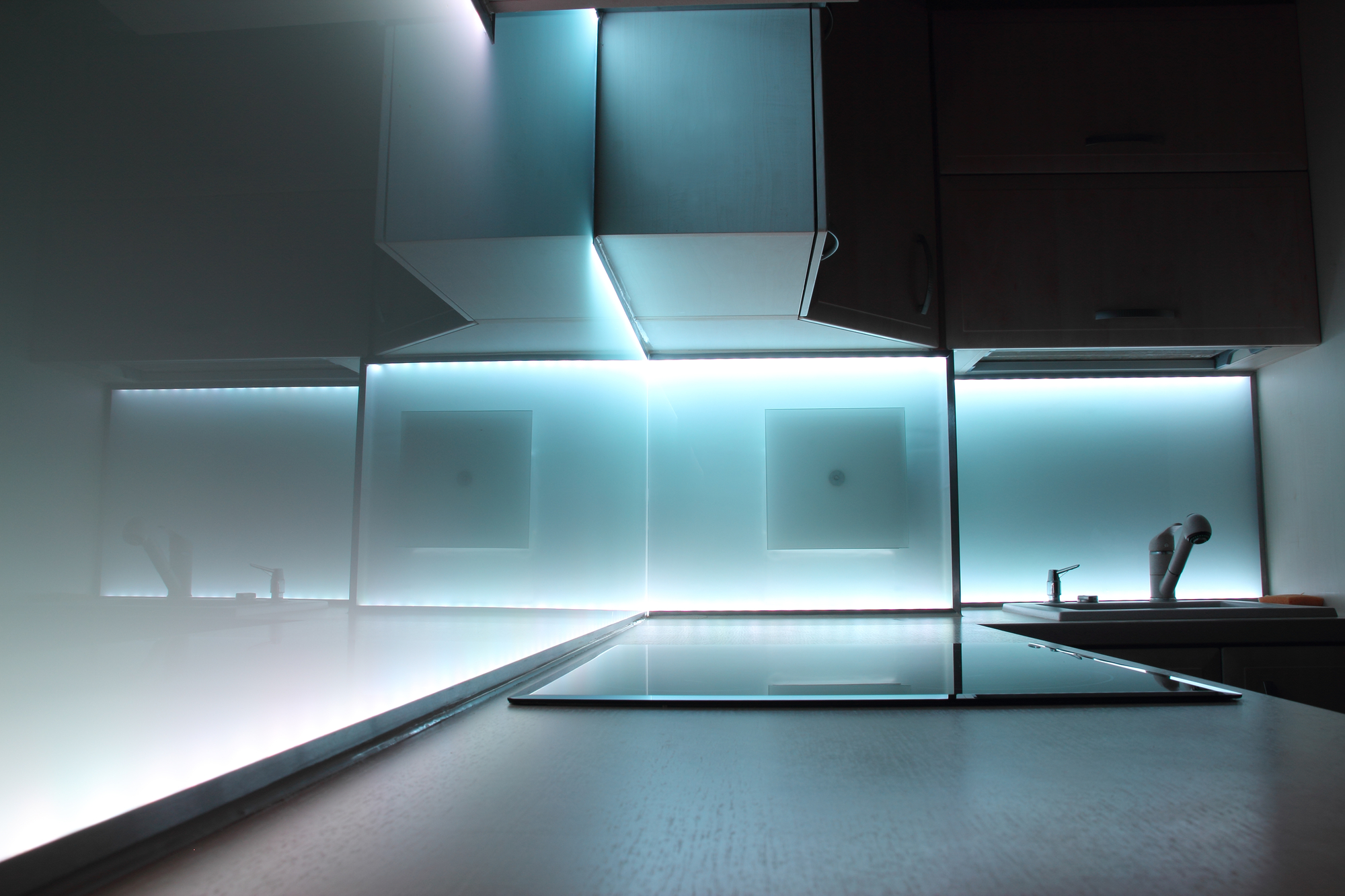Indoor LED security lighting serves as an efficient solution for illuminating your property while enhancing security. These energy-efficient lights, superior to traditional fixtures, provide significant benefits when installed properly.
The primary role of indoor LED security lighting is to fortify protection, discouraging potential intruders. Ideally placed in hallways, entryways, and staircases, these lights ensure well-lit surroundings for easy detection of suspicious activities. Enhanced with motion sensors, they turn on automatically upon detecting movement, providing not only security but also peace of mind. They can also accentuate features like artwork, adding aesthetic appeal to your space. In essence, indoor LED security lighting offers a blend of safety, security, and elegance.
As a vital part of any security system, indoor LED security lighting promotes a safer environment through improved visibility. With advancements in technology, LEDs have become popular for their energy efficiency and longevity. However, improper installation can negate these benefits, stressing the importance of correct installation techniques for optimal security and efficiency.
Pre-Installation Considerations for Indoor LED Security Lighting
Before installing indoor LED security lighting, it’s important to plan and consider several crucial factors. This will guide you through these pre-installation considerations, ensuring an efficient and effective LED security lighting setup in your home or business.
Assessing Security Needs
Understand your security needs before installing indoor LED security lights. Consider the layout and size of the area, the required illumination level, and whether the lighting will deter intruders or assist security cameras. In high-traffic areas, motion-activated lights might be ideal, while standard wall-mounted lights may suffice in low-traffic areas. Evaluate the main access points that need securing and the visibility required for surveillance cameras.
Choosing the Right LED Security Lighting
Selecting the right LED security lighting is crucial for preventing theft and ensuring safety. Assess the area to be illuminated, considering factors such as the size of the area, risk level, season, fixture mounting height, color temperature, color rendering index, and lumen outputs. A professional LED lighting installation company can help evaluate these factors and choose the right system.
Determining Placement
Effective indoor LED security lighting requires careful placement. Prioritize areas with a high risk of intrusion, such as doorways and windows. The installation height affects the coverage range and angle, so place the lights optimally. Consider the number of lights needed based on the area size, layout, and light intensity. Think about the fixture type required for the intended function and the placement of the power source for ease of installation and overall appearance.
Power Source
Evaluating your property’s electrical wiring and capabilities before installation is critical. Power sources for indoor LED security lighting systems vary from direct wiring to plug-in models. Choose one that fits your specific security needs and property layout.
Installation Steps
In the following section, we’ll guide you through the process of effectively setting up your indoor LED security lighting system.
Step 1: Power Off
Safety is paramount. Start by turning off the power to the installation area. Locate the relevant circuit breaker, flip it off and confirm the power is off. This crucial step mitigates the risk of electrical shock. Ensure the power stays off throughout the installation process.
Step 2: Assemble the Fixture
With the power off, begin assembling the light fixture as per the manufacturer’s instructions. Attach brackets or mounting hardware securely, insert the bulb and attach any decorative elements. Check all parts are secure before proceeding.
Step 3: Mount the Fixture
Next, mount the fixture ensuring it’s compatible with the surface’s weight and dimensions. Follow the manufacturer’s guidelines for using the provided mounting hardware. Consider the fixture’s exposure to weather elements and its height for optimal illumination coverage. Position the fixture to focus on areas needing lighting.
Step 4: Wire Connection
Before connecting the wiring, ensure the power is off. Strip the ends of the wires, connect them securely with wire nuts, and cover with electrical tape. Push excess wire back into the electrical box and attach the light fixture to the bracket. Once secure, turn the power back on and test the light.
Step 5: Test the Light
Finally, test the light to ensure it functions correctly and illuminates the desired area. Make any necessary adjustments to the angle, position, or sensor sensitivity. Address any issues before finalizing the installation to guarantee the longevity and effectiveness of your security lighting system.
Post-Installation
Once your indoor LED security lighting is installed, there are several important steps to ensure optimal operation and maintenance.
Maintenance
Maintaining indoor LED security lighting is crucial for its effectiveness and longevity. Regular maintenance, including cleaning the lights to remove accumulated dirt and checking for burnt-out bulbs or loose connections, can help prevent malfunctions. Inspect wiring and control systems for signs of wear, such as frayed wires or corroded connectors, and address them promptly. This proactive approach not only assures the efficiency of your LED security lights but also enhances their lifespan and reduces repair costs.
Troubleshooting
Periodic troubleshooting ensures optimal functioning of your indoor LED security lighting. Flickering lights, often caused by improper wiring or defective bulbs, can be fixed by checking connections or replacing bulbs. Dimming lights, typically due to incompatible power supply or overheating, may require a power supply upgrade or increased ventilation. If the system doesn’t turn on, a faulty driver or power supply could be the culprit, necessitating a replacement.
Conclusion
Indoor LED security lighting is a significant addition to any home, enhancing safety and deterring potential intruders. To reap maximum benefits, it’s crucial to select suitable fixtures, ensure correct installation, and strategically position the lights for optimal effectiveness.
With McBride Electric, you can ensure top-quality installation and maintenance of your indoor LED security lighting system. We’re dedicated to providing reliable, efficient, and innovative lighting solutions tailored to your needs.
Overall, indoor LED security lighting is an excellent investment for enhancing property safety. By following the suggestions in this guide, you can ensure a successful installation, contribute to a secure environment, and enjoy the peace of mind that comes with effective LED security lighting. Remember to maintain and inspect your fixtures regularly to prolong their lifespan and ensure optimal performance.
So, don’t settle for less when it comes to your property’s lighting. Reach out to McBride Electric today, and let’s illuminate your space like never before. Contact us now at 817-858-0255!
FAQs about Indoor LED Security Lighting
- What is the optimal height for installing indoor LED security lighting?
It is recommended to install indoor LED security lighting at a height of 8-10 feet above the ground, depending on the area you want to illuminate. This height provides maximum coverage while avoiding accidentally blinding people with too much brightness.
- Can I install indoor LED security lighting myself?
Yes, you can install indoor LED security lighting yourself following the manufacturer’s guidelines. However, if you are not confident in your abilities, it is advisable to hire a professional electrician to install the lighting for you.
- What is the appropriate wattage for indoor LED security lighting?
The appropriate wattage for indoor LED security lighting depends on the size of the area you want to illuminate. Typically, 10-20 watts of LED light per square foot is adequate for most indoor applications.
- Should I install motion sensors with my indoor LED security lighting?
Installing motion sensors with your indoor LED security lighting is highly recommended, as they can save energy and prolong the life of the lights. Motion sensors detect movement and automatically turn the lights on and off, which can also act as a deterrent for intruders.
- Can I use dimmer switches with indoor LED security lighting?
Yes, you can use dimmer switches with indoor LED security lighting, but make sure the lights and the dimmer switch are compatible. Some LED lights are not compatible with certain types of dimmer switches, so it’s important to check before installation.
- How do I maintain my indoor LED security lighting?
Maintaining indoor LED security lighting is relatively easy. Simply wipe down the fixtures with a damp cloth periodically to remove any dust or debris. If you notice any flickering or dimming, check the connections and replace any faulty bulbs or components.


I have read so many content about the blogger lovers however this post is actually a pleasant post, keep it up.